The method by which Amazon Ads targets your Sponsored Product ads tends to be primarily tailored toward beginners or inexperienced advertisers, offering maximum reach for minimal work. However, some of the more sophisticated marketers are looking for additional control and segmentation to better isolate performance trends.
Sponsored Product Campaign Setups
Amazon Ads offers three different types of Sponsored Product campaign setups:
- Auto campaigns
- Manual keyword-based campaigns
- Manual product-based campaigns
However, at the end of the day, you’re ultimately targeting your ad to show in two major areas: in the search results, and on other product detail pages. There are other tertiary spots that Amazon show ads, such as in the shopping cart, but those are minimal.
Auto Campaigns
Amazon’s auto campaigns are a quick and easy campaign type that doesn’t require research or complex setup - you simply add the products you want to advertise, and Amazon will start displaying your ad in the search results for relevant searches and on other products pages that Amazon deems to be similar or complementary. It does all the legwork of showing your ad in both major places where you’ll be seen.
Manual Keyword-Based Campaigns
Manual keyword-based campaigns, in theory, are supposed to work like any other search engine-based marketing campaign; you bid on a list of keywords, and when a shopper searches for one of those keywords, your ad will show in the search results.
This is how Google has become the advertising behemoth they are today.
However, with this type of campaign setup, Amazon will still take the liberty to show your ads on product detail pages that also happen to show up in the search results for that keyword you’re bidding on. In some instances, a very high percentage of your spend for your keyword-based campaign can actually be coming from ads showing on product pages. In the example below, 82% of the spend that we thought was coming from search result ads was actually coming from product page ads.
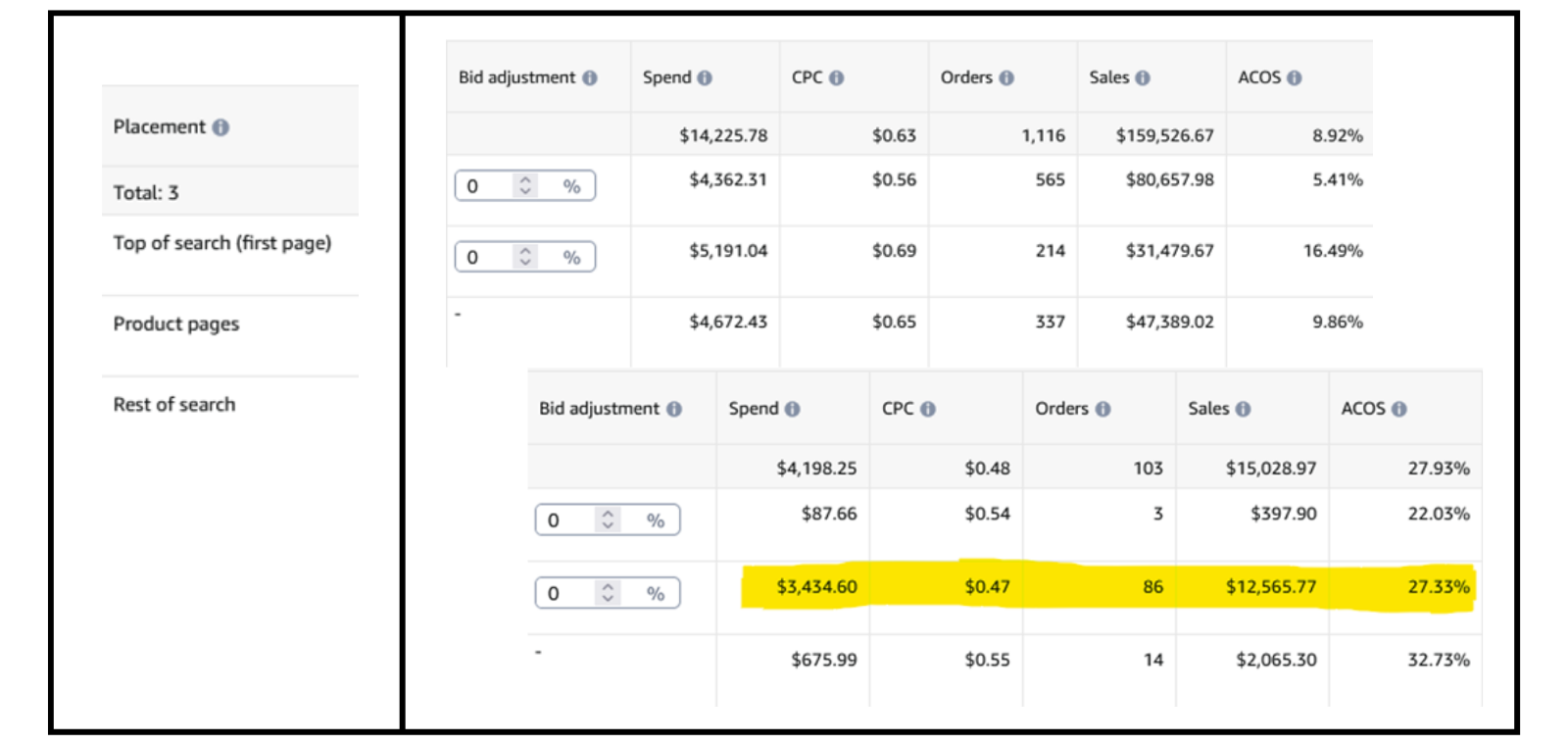
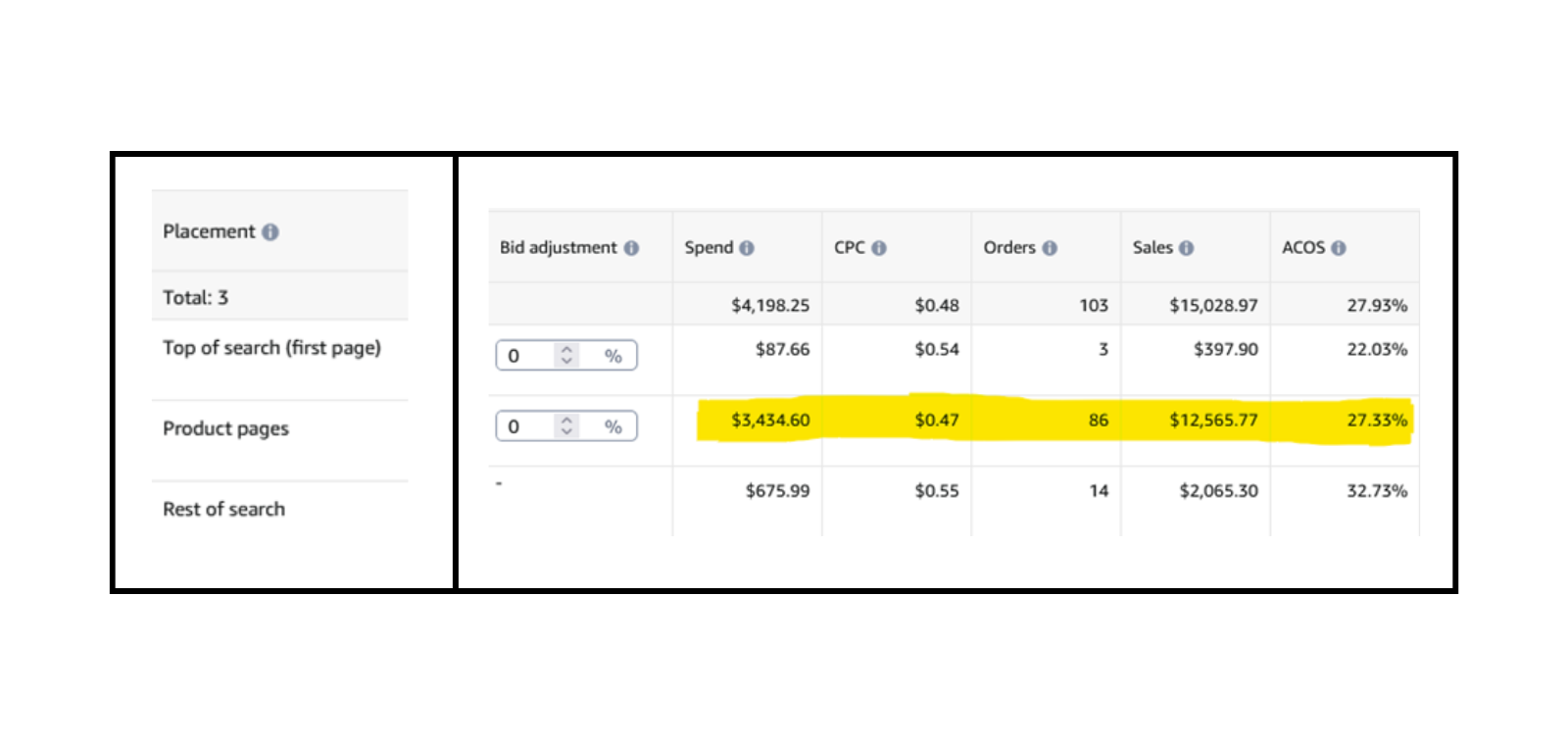
.png)
Manual Product-Targeted Campaigns
Manual product-targeted campaigns allow you to show up on product detail pages of specific products where you think your product would be a great alternative. Since there are obvious performance differences between search-based ads and product-page based ads, this campaign type is a great way to separate this type of ad placement and control what pages you show up on.
Or so you would think.
As it turns out, when you target another product, Amazon shows your ad right next to the targeted product in the search results. So, while you might think that you’re targeting that product’s detail page, you’re also targeting the opportunity to show up next to it in the search results.
Did the ad below serve due to matching to "osprey hiking backbacks"? Or did it serve because it's targeting the Osprey Tempest 34 ASIN? Or did it come from an Auto campaign?
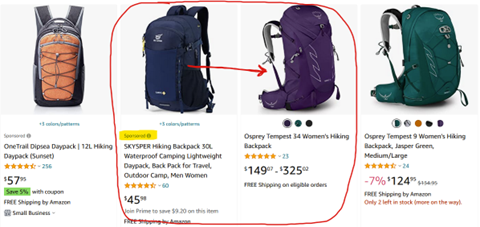
In the example below, this campaign was set up as a defensive campaign targeting our own ASINs. You can see that only 16.5% of the spend went toward product page ads while the rest went to search. That wasn’t the intended purpose of the campaign.
.png)
And the real kicker here is that most of the spend and sales came from a top selling ASIN of ours that was targeting itself!
You can imagine how confusing it can be to figure out how an ASIN can show on its own product page. As it turns out, since most of the spend in our product-targeted campaign was being spent on search ads, we were paying for the opportunity to show up right next to our own organic placement.
Blurred Lines for Advertisers
A downside to the product-targeted campaign showing your ad in the search results is that now you don’t know what the user searched for to find your ad. Unfortunately, there is no search query data available when Amazon matches your ad in this way. For those who track certain queries monthly, including branded vs non-branded query trends, this muddies the data by making it appear that certain search queries have dropped off a cliff. It could be because Amazon decided to switch from showing your ad based on a search, to showing your ad in the search results based on a product you’re targeting.
During a recent account analysis, when pulling the search query data by month, we were shocked to see that our ad placements in search (table below, on the right) had dropped off considerably in April and May, which raised alarm bells. When looking at the trends of product-targeted data (table below, on the left), we discovered that search hadn’t dropped off at all, but Amazon shifted around the method by which they were displaying those ads.
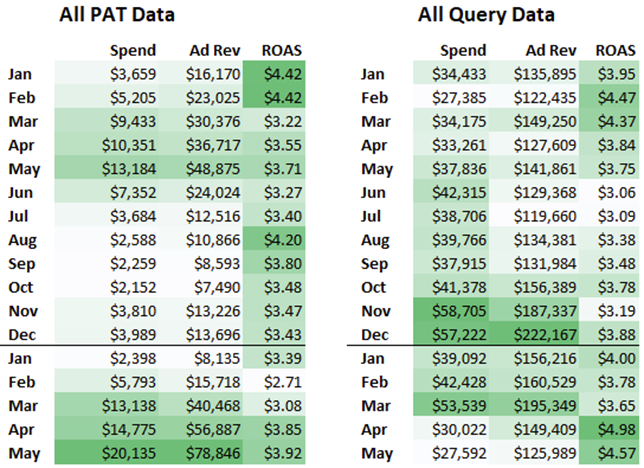
While Amazon does give us the ability to adjust bids by "placement" at the campaign level (meaning top of search vs product pages), it only allows you to bid higher, not lower. There are ways in which you can lower all of your bids down to, say, 30c, and then set your top of search placement bid to +900%. Doing so effectively makes your bids for top of search at $3.00 while leaving your bids for all other placements at 30c. Ultimately, we shouldn’t have to “hack” our campaigns in order to produce the original intended result.
Regardless if you are a beginner advertiser or if you're an experienced marketer, the ins and outs of Amazon Advertising can be complex. If your brand is looking for an Amazon agency to assist you with your Amazon Sponsored Ads or general Amazon Advertising efforts, our team of experts are always here to help, so if you have any questions on your advertising strategy, schedule a consultation today.




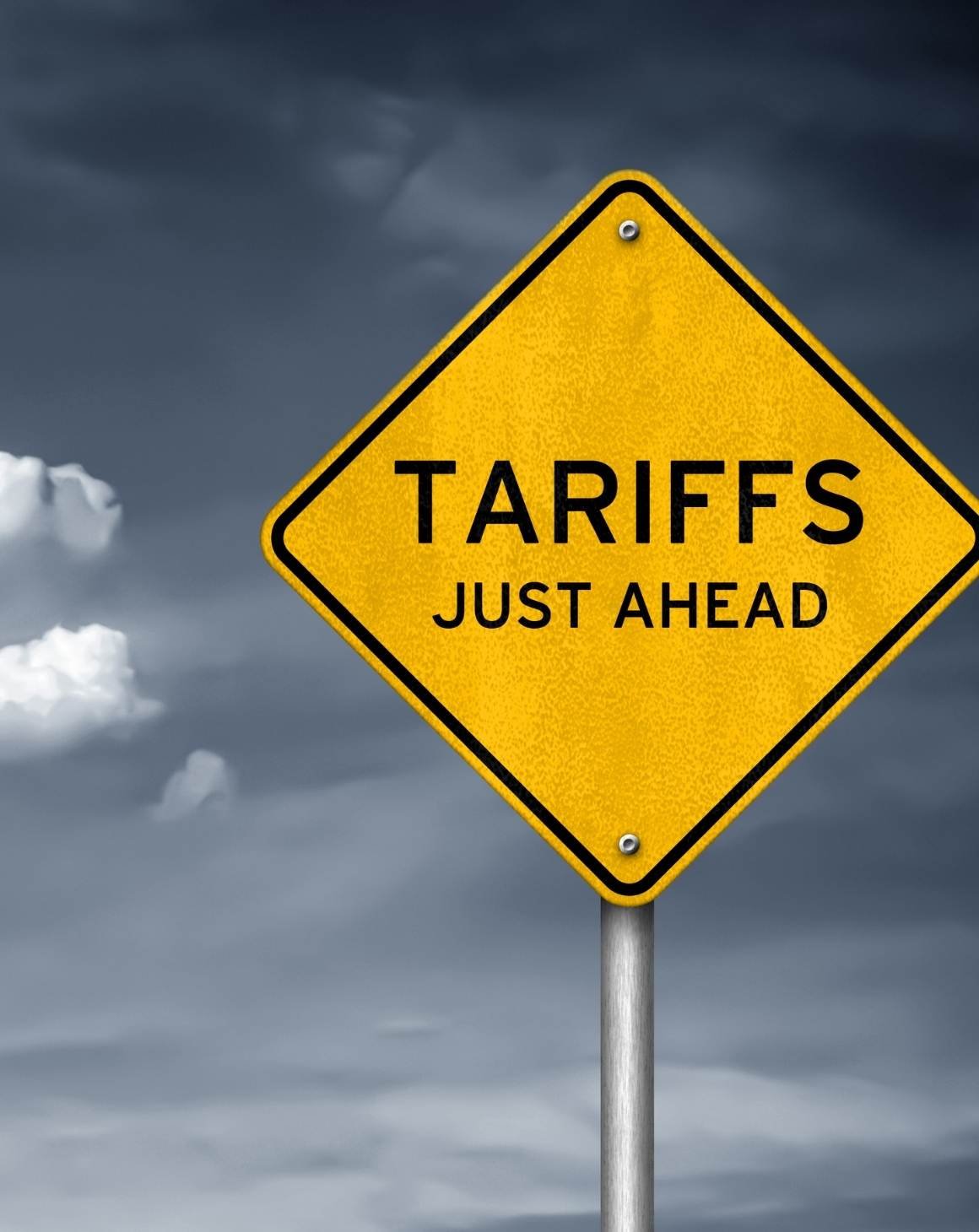



.png)
.png)
